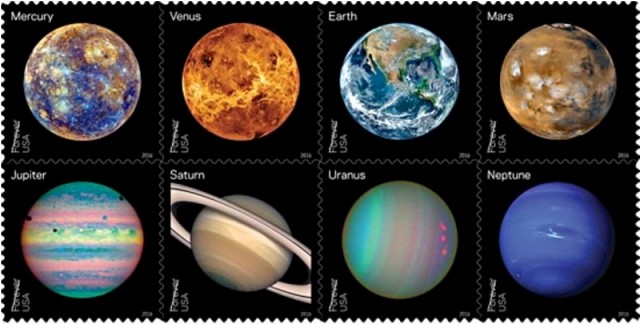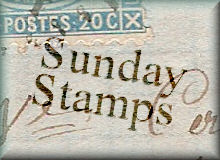Today is a special day for Viridian's blog, coz we are celebrating the 100th post of the Sunday Stamps! That means, 100 Sundays of sharing stamps, stories, ideas...deserves to be marked somehow!
I actually almost opted out from today's posting, coz as indecisive as I am (and being an open theme), I really had no idea what to post, yet for it to be something special....well, I know that after participating so many times, it would have really been a pity to miss today, so in the end I picked a beautiful set of train stamps issued on June 25, 2010, commemorating the 150 years of South African Railways.
Plus, it's actually been a while since I've posted something related to trains, so, here we are :)
so here we have a longish post, talking about this set of 10 beautiful colourful stamps on which you can see the evolution of the South African Railways, starting from 1860, when the first railway was opened in South Africa, called the Natal Railway Company
1. So on the first stamp you can see the Natal 0-4-0, which was the first locomotive to arrive in 1860 and operate the Point railway.
After the Natal Railway was rebuilt to Cape gauge in 1875, this locomotive was sold to a local farmer for use as a stationary boiler. After subsequently falling out of service, it was buried in a riverbank for more than 70 years. Some research indicated its last locality and it was excavated in 1944, cosmetically restored and is proudly displayed today in the new Durban station forecourt.
2. Next to it is the Class NGG 16 Beyer-Garratt 2-6-2+2-6-2.
As a result of success in using articulated Beyer-Garratt steam locomotives on the SAR’s extensive 600mm narrow gauge lines, an order was placed for an upgraded Garratt design in 1937 with overseas suppliers. In all, 34 of these locomotives were ordered. Many of these engines are now in preservation service and some have been exported to the UK, their country of origin, where the best-known examples now serve on the 2ft (610mm) gauge Welsh Highland Railway. Locally, several are in service with the Sandstone Heritage Trust railway.
3. The third stamp shows the Class 24 2-8-4, which is a medium-duty locomotive designed for use on lightly laid branch-line tracks, as was typically the case in the South West African (Namibian) railway system, prior to dieselisation in 1960. The best known and longest operating locomotives have been a feature of the scenic George to Knysna tourist branch line. This train (known as the Outeniqua Choo-Tjoe) continued to operate until the line was closed due to flood damage in August 2006. Several locomotives still remain in local service to Mossel Bay with the Transnet George railway museum and two other preservation groups, but the majority have now been scrapped.
4. On the fourth stamp you have Class 25C 4-8-4.
These were designed to operate through the arid Karoo on the main line between Cape Town and Johannesburg. To conserve scarce water supplies on the Northern Cape routes, they were fitted with special steam condensing equipment. Used steam from the cylinders was collected and fed to the ultra large water tender, which was equipped with five large condensing fans. . Only one locomotive, No. 3511, remains intact for museum purposes and is currently stored out of service at the Kimberley locomotive depot.
5. Class GMA/M Beyer-Garratt 4-8-2+2-8-4
The Class GMA/M may be considered the ultimate of the articulated Beyer-Garratt steam designs to have been placed in service on the SAR. The difference between the GMA and GMAM classification was the coal-carrying capacity of the bunker at the rear. The front water tank served as ballast or for emergency use, hence these engines always operated with an auxiliary water tanker to increase operating range. Most of these locomotives saw final regular SAR duty until 1985, with the majority now scrapped. Several survive as static exhibits or preservation usage.
6. Class 35 Co-Co Diesel-Electric Locomotive
These were introduced in 1972 as replacement for aging steam locomotives on the SAR branch lines. The GE version depicted on the stamp is rated at 1160 KW continuous power output and weighs in at 81 tonnes. The units are powered by a V8 diesel engine driving a dc generator, which in turn supplies power to six axle hung traction motors. The majority of Class 35s are still in service.
7. Class 9E Co-Co 50KV ac Electric Locomotive
In the mid-1970s, 25 kV ac traction was introduced as a more efficient power distribution system, along with more effective air-braking installations, for lengthy freight trains.
In view of increased traffic levels on this export railway (trains now comprise 342 wagon, 35000 ton loads) insufficient 9E availability has necessitated supplementing motive power with additional Class 34 diesels, as depicted on the stamp design.
8. Class 26 4-8-4
This class was classified as non-condensing and was fitted with regular coal/water tenders. In 1980, SAR selected one of these locomotives, No. 3450, for a radical rebuild programme to improve power output and efficiency. By this time, SAR had already decided to phase out steam power completely and No. 3450 subsequently operated regular revenue-earning duties on the De Aar to Kimberley main line until the early 1990s. To identify the locomotive, it was painted red, together with its tender, earning the popular nickname ‘Red Devil’. After being relegated to tour train services during the late 1990s and early 2000s, it operated its last tour trip in 2004. It is now stored out of service at Cape Town’s main station as part of the Transnet museum collection.
9. Class 19E Bo- Bo Dual Voltage Electric Locomotive
Placed in service at the end of 2009, the Class 19Es are able to switch voltage supply automatically between the dc and ac transmission network at Ermelo station, hence may operate straight through without stopping and changing locomotives, saving much train marshalling and time.
10. Gautrain Electrostar Bo-Bov
The first provincial railway in Gauteng was due to be partly commissioned by mid-2010. The maximum operating speed of the train sets is 160 km/hr, the fastest regular train service in the country today. Passenger capacity (with standing room) ranges from 77 to 165 persons per car, depending on the specific coach application.
For more special stamps click on the button below
and wishing Viridian many many more occasions like this! :)






